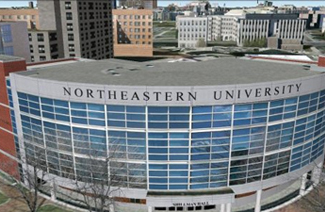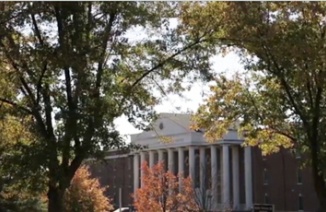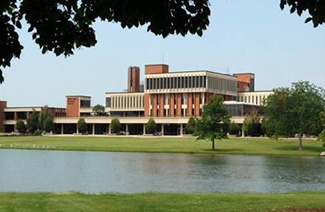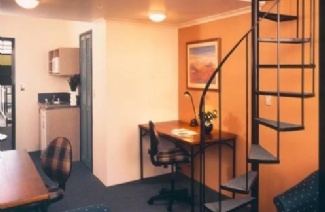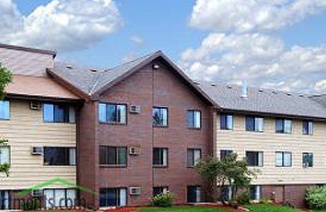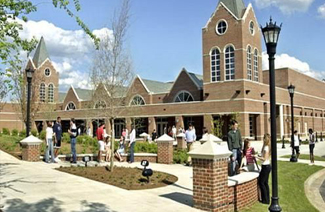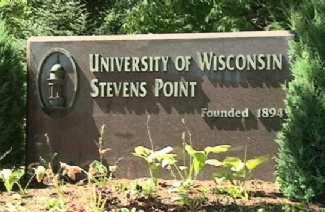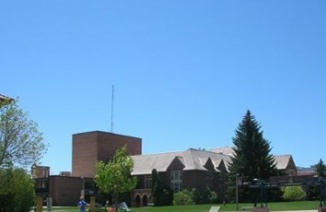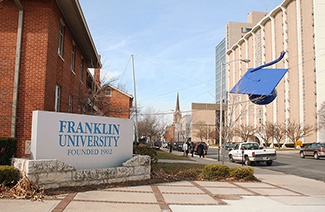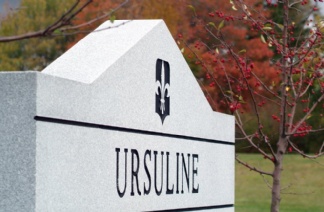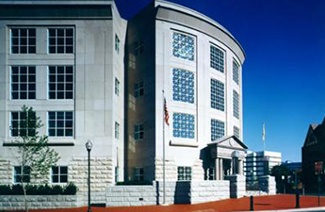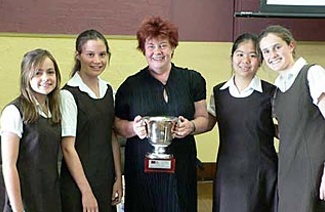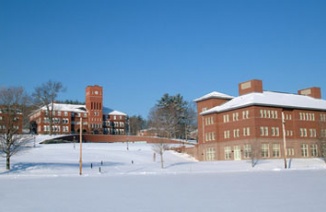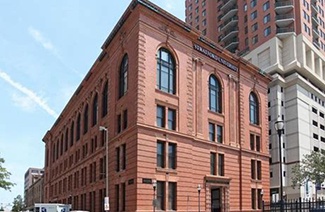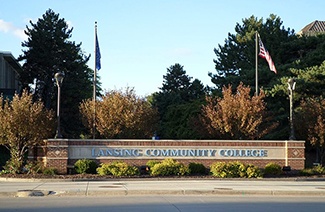为了便于大家更好的备考雅思考试,2017年1月21日雅思阅读预测【小范围】,一起来了解一下。欢迎关注网雅思栏目。网网小编会在第一时间为大家带来雅思考试最新动态。
2017年1月21日雅思阅读预测【小范围】重点阅读题目为:解密记忆、记忆力与年龄、嗅觉与记忆、大脑体操、光的规则、香农信息理论、老人智力研究、指纹、摩斯电码、燃料电池、香水的制造、钢化玻璃问题。
为了便于大家更好的进行备考,小编为大家带来了雅思阅读预测中一篇文章及答案解析,一起来详细的了解一下。
You should spend about 20 minutes on Questions 14-26, which are based on Reading Passage 2 below.
Flawed Beauty: the problem with toughened glass
On 2nd August 1999, a particularly hot day in the town of Cirencester in the UK, a large pane of toughened glass in the roof of a shopping centre at Bishops Walk shattered without warning and fell from its frame. When fragments were analysed by experts at the giant glass manufacturer Pilkington, which had made the pane, they found that minute crystals of nickel sulphide trapped inside the glass had almost certainly caused the failure.
‘The glass industry is aware of the issue,’ says Brian Waldron, chairman of the standards committee at the Glass and Glazing Federation, a British trade association, and standards development officer at Pilkington. But he insists that cases are few and far between. ‘It’s a very rare phenomenon,’ he says.
Others disagree. ‘On average I see about one or two buildings a month suffering from nickel sulphide related failures,’ says Barrie Josie, a consultant engineer involved in the Bishops Walk investigation. Other experts tell of similar experiences. Tony Wilmott of London-based consulting engineers Sandberg, and Simon Armstrong at CladTech Associates in Hampshire both say they know of hundreds of cases. ‘What you hear is only the tip of the iceberg,’ says Trevor Ford, a glass expert at Resolve Engineering in Brisbane, Queensland. He believes the reason is simple: ‘No-one wants bad press.’
Toughened glass is found everywhere, from cars and bus shelters to the windows, walls and roofs of thousands of buildings around the world. It’s easy to see why. This glass has five times the strength of standard glass, and when it does break it shatters into tiny cubes rather than large, razor-sharp shards. Architects love it because large panels can be bolted together to make transparent walls, and turning it into ceilings and floors is almost as easy.
It is made by heating a sheet of ordinary glass to about 620°C to soften it slightly, allowing its structure to expand, and then cooling it rapidly with jets of cold air. This causes the outer layer of the pane to contract and solidify before the interior. When the interior finally solidifies and shrinks, it exerts a pull on the outer layer that leaves it in permanent compression and produces a tensile force inside the glass. As cracks propagate best in materials under tension, the compressive force on the surface must be overcome before the pane will break, making it more resistant to cracking.
The problem starts when glass contains nickel sulphide impurities. Trace amounts of nickel and sulphur are usually present in the raw materials used to make glass, and nickel can also be introduced by fragments of nickel alloys falling into the molten glass. As the glass is heated, these atoms react to form tiny crystals of nickel sulphide. Just a tenth of a gram of nickel in the furnace can create up to 50,000 crystals.
These crystals can exist in two forms: a dense form called the alpha phase, which is stable at high temperatures, and a less dense form called the beta phase, which is stable at room temperatures. The high temperatures used in the toughening process convert all the crystals to the dense, compact alpha form. But the subsequent cooling is so rapid that the crystals don’t have time to change back to the beta phase. This leaves unstable alpha crystals in the glass, primed like a coiled spring, ready to revert to the beta phase without warning.
When this happens, the crystals expand by up to 4%. And if they are within the central, tensile region of the pane, the stresses this unleashes can shatter the whole sheet. The time that elapses before failure occurs is unpredictable. It could happen just months after manufacture, or decades later, although if the glass is heated — by sunlight, for example — the process is speeded up. Ironically, says Graham Dodd, of consulting engineers Arup in London, the oldest pane of toughened glass known to have failed due to nickel sulphide inclusions was in Pilkington’s glass research building in Lathom, Lancashire. The pane was 27 years old.
Data showing the scale of the nickel sulphide problem is almost impossible to find. The picture is made more complicated by the fact that these crystals occur in batches. So even if, on average, there is only one inclusion in 7 tonnes of glass, if you experience one nickel sulphide failure in your building, that probably means you’ve got a problem in more than one pane. Josie says that in the last decade he has worked on over 15 buildings with the number of failures into double figures.
One of the worst examples of this is Waterfront Place, which was completed in 1990. Over the following decade the 40-storey Brisbane block suffered a rash of failures. Eighty panes of its toughened glass shattered due to inclusions before experts were finally called in. John Barry, an expert in nickel sulphide contamination at the University of Queensland, analysed every glass pane in the building. Using a studio camera, a photographer went up in a cradle to take photos of every pane. These were scanned under a modified microfiche reader for signs of nickel sulphide crystals. ‘We discovered at least another 120 panes with potentially dangerous inclusions which were then replaced,’ says Barry. ‘It was a very expensive and time-consuming process that took around six months to complete.’ Though the project cost A$1.6 million (nearly £700,000), the alternative — re-cladding the entire building — would have cost ten times as much.
Questions 14-17
Look at the following people and the list of statements below.
Match each person with the correct statement.
Write the correct letter A-H in boxes 14-17 on your answer sheet.
14 Brain Waldron
15 Trevor Ford
16 Graham Dodd
17 John Barry
List of Statements
A suggests that publicity about nickel sulphide failure has been suppressed
B regularly sees cases of nickel sulphide failure
C closely examined all the glass in one building
D was involved with the construction of Bishops Walk
E recommended the rebuilding of Waterfront Place
F thinks the benefits of toughened glass are exaggerated
G claims that nickel sulphide failure is very unusual
H refers to the most extreme case of delayed failure
Questions 18-23
Complete the summary with the list of words A-P below.
Write your answers in boxes 18-23 on your answer sheet.
Toughened Glass
Toughened glass in favoured by architects because it is much stronger than ordinary glass, and the fragments are not as 18…………… when it breaks. However, it has one disadvantage: it can shatter 19…………… . This fault is a result of the manufacturing process. Ordinary glass is first heated, then cooled very 20…………… . The outer layer 21…………… before the inner layer, and the tension between the two layers which is created because of this makes the glass stronger However, if the glass contains nickel sulphide impurities, crystals of nickel sulphide are formed. These are unstable, and can expand suddenly, particularly if the weather is 22…………… . If this happens, the pane of glass may break. The frequency with which such problems occur is 23…………… by glass experts. Furthermore, the crystals cannot be detected without sophisticated equipment.
A numerous B detected C quickly
D agreed E warm F sharp
G expands H slowly I unexpectedly
J removed K contracts L disputed
M cold N moved O small
P calculated
Questions 24-26
Do the following statements agree with the information given in Reading Passage 2?
In boxes 24-26 on your answer sheet, write
TRUE if the statement agrees with the information
FALSE if the statement contradicts the information
NOT GIVEN if there is no information on this
24 Little doubt was expressed about the reason for the Bishops Walk accident.
25 Toughened glass has the same appearance as ordinary glass.
26 There is plenty of documented evidence available about the incidence of nickel sulphide failure.
以下是小编为大家带来的关于以上文章的答案解析;
Question 14
答案: G
关键词: Brain Waldron
定位原文: 原文第2段末句: “But he insists that…”
解题思路: 原文:“这是非常罕见的现象。”BrianWaldron说。因此答案为选项G。
Question 15
答案:A
关键词: Trevor Ford
定位原文: 原文第3段最后两句 “What you hear is only the…He believes the reason…”
解题思路: 原文:“公众所知道的只不过是冰山一角罢了。”昆士兰州布里斯班市Resolve工程公司的玻璃专家Trevor Ford说道。他认为原因很简单:“没人想要坏新闻。”因此答案为选项A。
Question 16
答案:H
关键词: Graham Dodd
定位原文: 原文第8段倒数第2句: “Ironically, says Graham Dodd…”
解题思路: 原文:Graham Dodd,伦敦Arup顾问建筑师说,“具有讽刺意味的是,因为含有硫化镍而导致破裂的‘历史最悠久’的钢化玻璃是兰开夏郡拉苏的Pilkington公司的玻璃研究大厦的玻璃,使用时间是27年。” 因此答案为选项H。
Question 17
答案:C
关键词: John Barry
定位原文: 原文末段第4句: “John Barry, an expert in nickel sulphide…”
解题思路: 原文:昆士兰大学的硫化镍专家Barry分析了大厦所有的钢化玻璃。因此答案为选项C。
Question 18
答案: F
关键词: break
定位原文: 原文第4段第3句: “This glass has five times…”
解题思路: 原文:“钢化玻璃的强度是普通玻璃的5倍,破碎时裂成细小颗粒而不是锋利(razor-sharp)的大块碎片。”因此答案为选项F。
Question 19
答案:I
关键词: shatter
定位原文: 原文第8段第3句: “The time that elapses before failure…”
解题思路: 原文:“破裂时间无法预测(unpredictable)……”因此答案为选项I。
Question 20
答案:C
关键词: Heated, cooled
定位原文: 原文第5段第1句: “It is made by heating…”
解题思路: “钢化玻璃由普通玻璃制成:把一块普通玻璃加热到大约620摄氏度,使之轻度软化、结构膨胀,然后用冷气流迅速(rapidly)将其冷却。”因此答案为选项C。
Question 21
答案:K
关键词: out layer, inner layer
定位原文: 原文第5段第2句: “This causes the outer layer…”
解题思路: 原文:“这导致玻璃的外层先于内部收缩(contract)和凝固。”因此答案为选项K。
Question 22
答案: E
关键词: expand suddenly
定位原文: 原文第8段第4句: “It could happen just months after…”
解题思路: 原文:“尽管玻璃被日光(heated)会加快晶体的转化速度。”因此答案为选项E。
Question 23
答案:L
关键词: glass experts
定位原文: 原文第2段末句: “It’s a very rare phenomenon…” 及第3段第1句: “Others disagree.”
解题思路: 原文中Brian Waldmn宣称这是非常罕见的现象,而其他人如Barrie Josie等则持否定意见,由此可见专家对于问题发生的几率有争议,因此答案为选项L。
Question 24
答案:TRUE
关键词: doubt, Bishops Walk
定位原文: 原文首段最后1句: “When fragments were analysed by experts…”
解题思路: 题目:关于主教街的购物中心的事故原因几乎没有疑问
原文:“经过分析,专家几乎确^次亊故是由玻璃内部硫化镍的微型晶体引起的。”因此答案为TRUE。
Question 25
答案:NOT GIVEN
关键词: ordinary glass
定位原文: 无
解题思路: 题目:钢化玻璃和普通玻璃外观相同。原文中没有出现相对应的比较。因此答案为NOT GIVEN。
Question 26
答案: FALSE
关键词: documented evidence, nickel sulphide failure
定位原文: 原文倒数第2段首句: “Data showing the scale…”
解题思路: 题目:关干硫化镍问题可以找到充足的可考证的证据。原文:“能够表明硫化镍问题的规模的数据几乎无法找到。”因此答案为FALSE。
上文是小编为大家分享的2017年1月21日雅思阅读预测【小范围】,希望能够对大家进行雅思备考有帮助。


